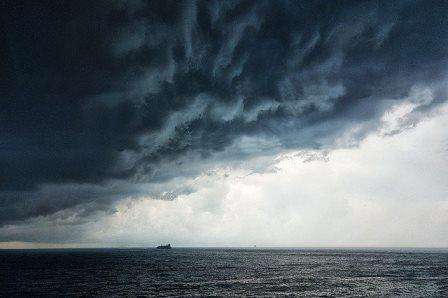Q- Give the characteristics and effects of the monsoon rainfall in India.
Answer- The Five main characteristics of monsoon rainfall in India are as follows:
- The normal rainfall suddenly increases, around the time of its arrival and continues regularly for several days. This is called the “Burst” of the monsoon.
- The rainfall is unevenly distributed across the country due to its wide geographical areas.
- The monsoon arrives at the southernmost tip of the Indian Peninsular, this occurs generally in the first week of June month.
- The duration of the monsoon in India varies from 100 to 120 days from early June to mid-September month.
- They are distinguished from the pre-monsoon showers because of their increase in rainfall amount and regularly.
Effects of monsoon rainfall in India are given below:
- Monsoon rainfall provides adequate seasonal irrigation water to the crops.
- The Monsoon provides India with a diverse climatic pattern. Hence, in spite of the presence of great regional variations, it has a unifying influence on the country and its people.
- The Monsoon rainfall prevents several regions of India from drought conditions and maintains greenery in the environment.
- Agriculture in India largely depends on the Indian monsoon for water. Late, Low or excessive rains have a negative impact on crops.
Class 9th Imp. Questions
- Where are elephants and one-horned rhinoceros found?
- How did the socialist party work in a monarchy
- Give the characteristics and effects of the monsoon rainfall in India
The answer is now completed. We hope that this answer might be very helpful for you.
The above answer is for the question ‘give the characteristics and effects of the monsoon rainfall in India class 9 geography’
Now you can learn the answer to the above question (give the characteristics and effects of the monsoon rainfall in India class 9 geography) easily and write it in your examination.
If you are studying in 9th standard so we have some other questions for you that you should also read. These are given below, you can read their answers by clicking on them.
The rest of the content given in this article below is only for extra knowledge of students. So, if you want to gain some extra knowledge about the ‘Climate of India’ so, you should read the content given below. This might be very useful and knowledgeable for you.
Climate of India
The Climate of India consists of a wide range of weather conditions across a vast geographic area and varied topography, making generalizations difficult.
India is a huge country so there are different Weather conditions across this vast geographical area.
On the basis of the Köppen system, India hosts six major climatic subtypes, ranging from arid deserts in the west, and humid tropical regions supporting rain forests in the southwest and alpine tundra and glaciers in the north.
As India has a vast geographical area so, many regions in India have starkly different microclimates, which makes it one of the most climatically diverse countries in the whole world.

There are four main seasons in India that are:
- Summer (March, April, and May)
- Winter (January and February)
- Monsoon (rainy season) from July to September
- Post-monsoon period (October to December).
India is home to an extraordinary variety of climatically different regions, ranging from alpine in the Himalayan north and tropical in the south to temperate, where elevated regions receive sustained winter snowfall.
The climate in India is too diversified because of its large geographical area. The main factors that strongly influence the climatic condition of India are the Thar Desert and the Himalayas.
The Northernmost Himalayas and the Hindu Kush mountains in Pakistan prevent cold winds of Central Asian katabatic from blowing over India.
Simultaneously, the Thar Desert of India plays a role in attracting moisture-laden southwest summer monsoon winds, between June and October month. It provides the majority of India’s rainfall.
Four major climatic groupings predominate, into which fall seven climatic zones that, as designated by experts, are defined on the basis of such traits as temperature and precipitation.
Groupings are assigned codes (see chart) according to the Köppen climate classification system.
At the start of this post, we provide you with the answer to the question: Give the characteristics and effects of the monsoon rainfall in India class 9 geography.
So, we hope we do not need to tell you about it anymore. In case you have any query related to the above question or any other topic so tell us in the comment box.
